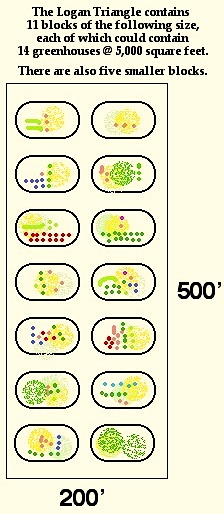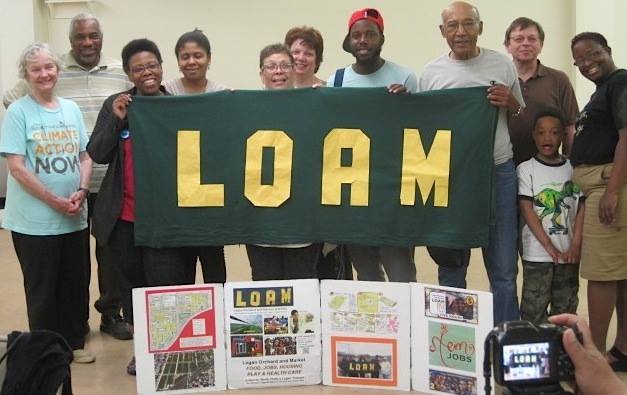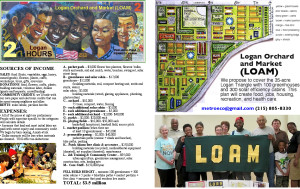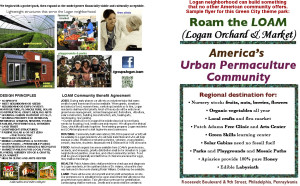
LOAM proposes gradually to install:
* 200 greenhouses (5,000 ft2 each)
* 50 solar efficient homes
(200-300 ft2 each) primarily for LOAM employees. These are adjustable to level.
* nurseries for edible perennials
* food processing facility
* compost center
* pavilion for sales of food & local crafts
* park and playgrounds
* free clinic upon floating base

 The 35-acre, 16-block Logan Triangle within Philadelphia
The 35-acre, 16-block Logan Triangle within Philadelphia
(1,388,000 ft2) has been been vacant for 20 years.
997 houses were torn down when unstable fill collapsed into Wingohocking Creek.
After years of study, the city has realized that, because of unstable land, heavy structures like shopping malls and condos can’t be built there. The only structures that can be built on this land are lightweight:
1) greenhouses
2) solar efficiency cabins without basement,
on adjustable base
3) pavillion for market sales
4) mobile cannery and processing center
5) playgrounds
Neighbors can be employed to plant, prune, harvest, process, sell.
We’ll develop skills of urban horticulture, floriculture, and solar construction.We’d begin on land farther from prime development intersections.
We expand as the model proves financially viable and culturally acceptable.The LOAM business plan team will consist of a site planner, landscape architect, grantwriter, greenhouse manager, “tiny” house developer.
Scope of Research:
* precedents: urban greenhousing on unstable land
* land availability
* crops: greens, edible perennials, herbs, cut flowers
* potential food yields by square footage and type
* food processing and preserving
* potential markets: restaurants, grocers, on-site, donations
* construction (greenhouses, raised beds, processing facility, storage, housing, pavillion, clinic, parkland, playground/s, orchard).
* soil survey and remediation, composting, ground cover and mulch
* water sources
* heat & electric sources: solar, wind, geothermal, landfill gas, propane, etc.
* identify and meet with stakeholders
* budget
* potential grants and donors (such as National Institute of Food and Agriculture).
_________________________________________________________________
Here’s the 2003 Logan Redevelopment Plan that has proven obsolete.
Here’s the Urban Land Institute 2009 assessment,
which concludes that heavy retail development is infeasible.
Here’s an overview and history of the neighborhood,
by Lindy Property Management.
_________________________________________________________________


